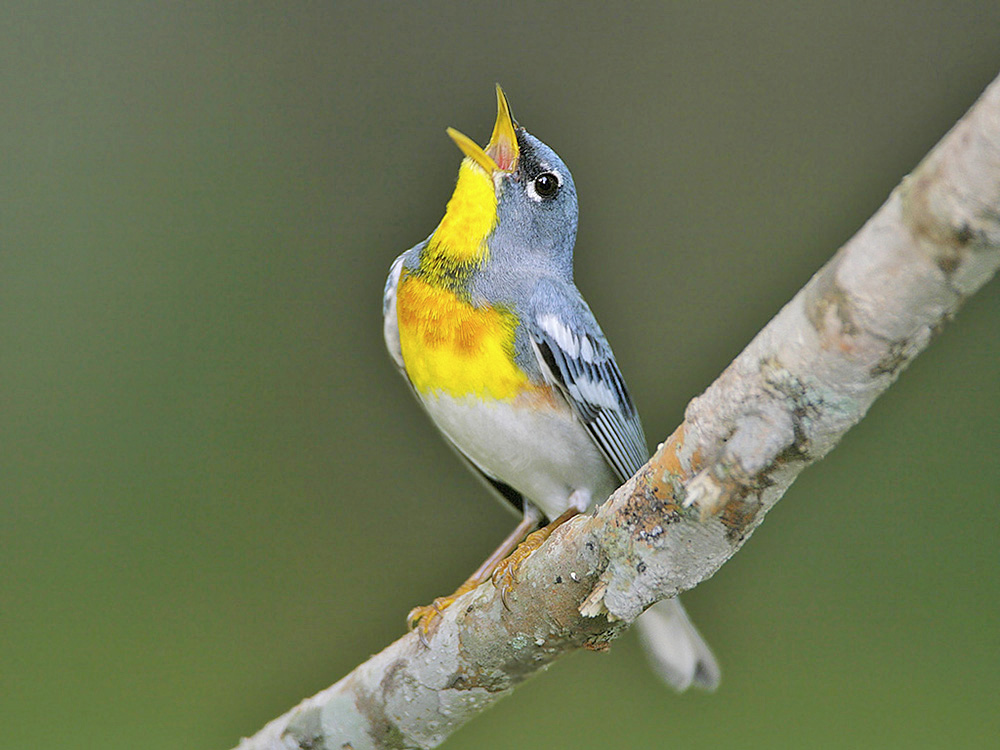The Northern Parula is a small wood warbler, found in upper canopies of trees and flutters at the ends of branches catching insects. These birds breed in forests full of beard lichens or Spanish moss.
It jumps through branches while vocalizing an increasing buzzy trill that cuts off at the end.
During migration, the Northern Parula forages in the lower portions of the forest; they also sing a lot during migration, so be sure to listen for their distinctive buzzy trill.
On this page
Breeding Male
Adult male Northern Parulas have 2 white wing bars, a greenish-yellow patch on the back, and are bluish-gray overall. In addition, they have a chestnut band that separates the male’s bright yellow chest and throat.
The Northern Parula is 4.3 to 4.7 inches (11 to 12 centimeters) long and weighs 0.2 to 0.4 ounces (5 to 11 grams). For reference, that makes them smaller than Red-eyed Vireos and larger than Ruby-crowned Kinglets.
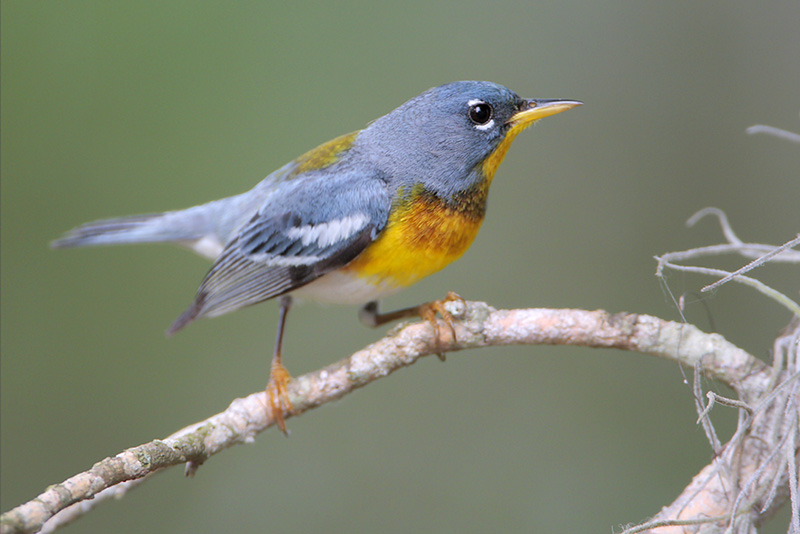
Female
Adult female Nothern Parulas look very similar to male Northern Parulas. However, they typically lack the male’s breast band and are slightly paler. Both adult males and females have distinct white eye crescents. They’re the same size and length.
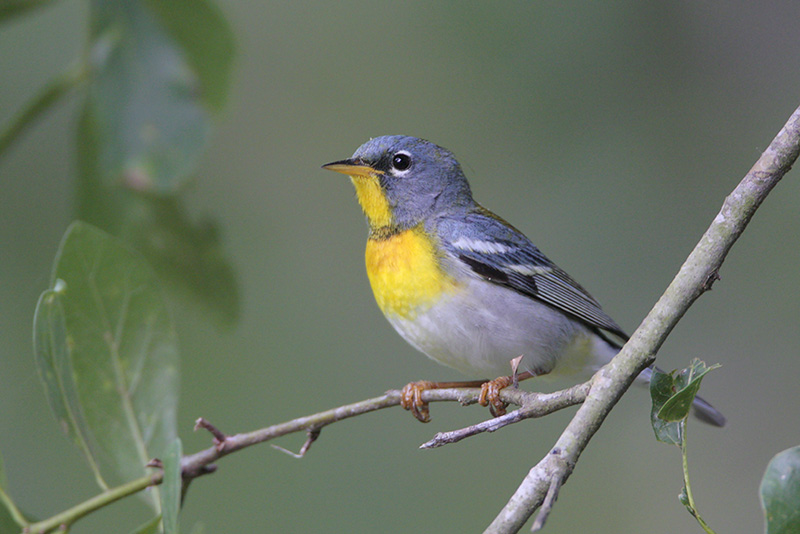
Female Northern Parula. Photograph © Greg Lavaty.
Juvenile
Juvenile Northern Parulas lack the chestnut breast band and are paler than adults. It takes 12 to 14 days for Northern Paruals to hatch.
Both parents will feed the young after they hatch, and the age at which they leave the nest is unknown.
Habitat
These birds breed in mature forests along swamps, streams, and other bottomlands. They’re closely associated with lichens or mosses that grow on canopy tree branches.
In the southeastern portions of the United States, they use Spanish moss; in the farther north portions, they use beard moss, a type of lichen. Key tree species include willow, swamp chestnut oak, water, black gum, sugar maple, red maple, sycamore, birches, and eastern hemlock.
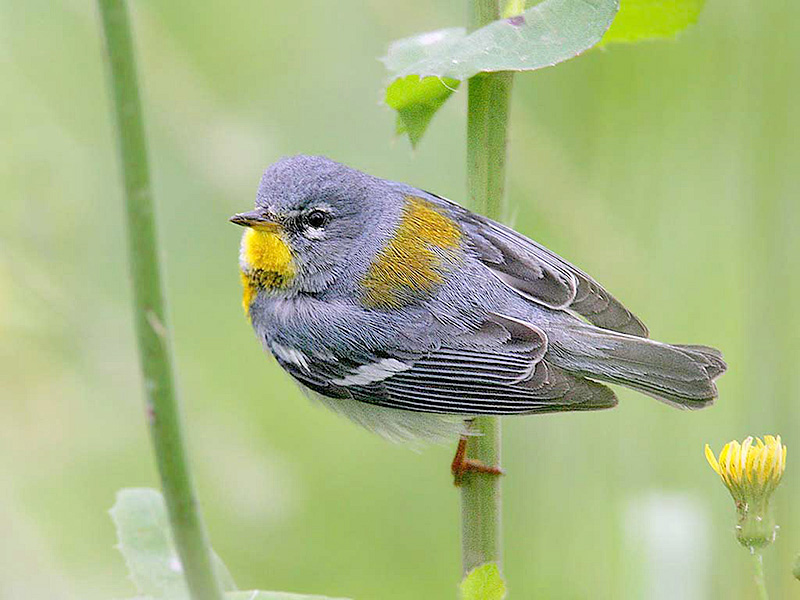
Photograph © Greg Lavaty.
On their wintering grounds, Northern Parulas use a variety of habitats like pastures, fields, woodland, scrub, cacao, citrus, and coffee plantations.
Diet
Northern Parulas eat many kinds of insects and spiders. They particularly enjoy caterpillars. They’ll also consume moths, beetles, ants, bees, wasps, locusts, flies, and others.
During their breeding season, they’ll sometimes eat bud scales; on their wintering grounds, they’ll consume seeds, nectar, or berries. This can be tricky if you would like to attract these birds to your yard.
Northern Parulas rarely visit bird feeders because their diets mainly consist of insects. However, they’re very attracted to water, so migrating birds will be happy to use a bird bath if you have one.
Behavior
Northern Parulas hop swiftly through branches and fly with rapid wingbeats. They forage by gleaning branch tips and leaves for spiders and insects.
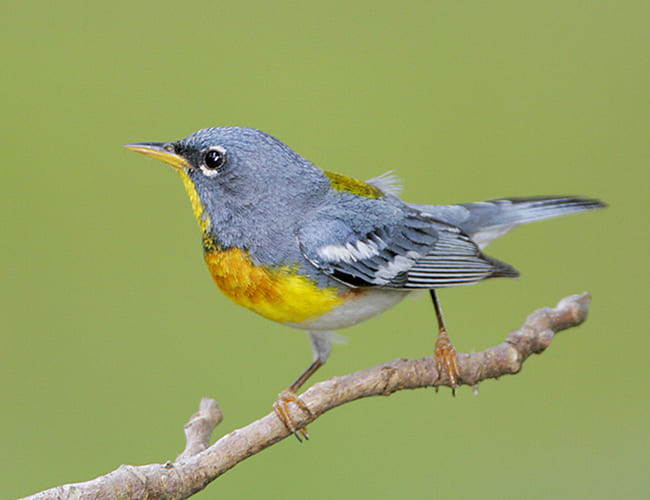
When acting defensively, Northern Parulas droop their wings, hold their wingtips below the base of the tail, and make vocalizations. These birds usually travel alone or in pairs on their breeding grounds.
However, they will form mixed-species flocks with other warbler species on the wintering grounds and during migration.
Range (and seasonal changes)
Northern Parulas are long-distance migrants. They spend the winter months in the Caribbean, Mexico, and Central America. These birds have a weird break in their breeding range.
They breed from the boreal forest of Canada to North Florida, but they skip parts of Michigan, Wisconsin, Iowa, and some states in the northeastern portions of the U.S.
Wing shape
Northern Paruals have short, broad wings and triangular wing bars that stand out against blue-and-green upper parts. They have a wingspan of 6.3 to 7.1 inches (16 to 18 centimeters).
Fun Facts
- The oldest Northern Parula lived to be at least 5 years and 11 months old. It was a female, and she was initially captured during banding operations. However, she was recaptured and let go in Maryland.
- While both male and female Northern Parulas feed their young, the males participate in this role more than the females.
- These birds have a weird gap in where they breed. They breed from Canada’s Boreal Forests to North Florida, but they skip parts of Michigan, Wisconsin, Iowa, and some states in the northeastern portions of the U.S.
- Birds in the eastern part of their range sound unrelated to those in the western part of their range. Eastern birds sing shorter, more buzzy songs.
- Northern Parulas are fairly solitary birds when breeding; however, they will join mixed-species flocks during migration.
Call
Northern Parulas vocalize 2 different types of songs. Their most common one is a rising buzzy trill with a final sharp note. This song increases and sharply finishes. The second song has notable pauses in between periods of the rising buzzy trill.
Male Northern Parulas are the main vocalists, but females will occasionally sing. These birds frequently sing while hopping between branches in the middle to upper levels of the forest canopy.
Male and female Northern Parulas give a sharp chip while foraging and aggressive encounters.
Similar Species
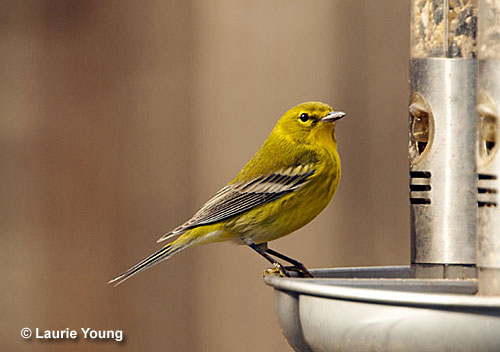
Pine Warbler
Compared to Northern Parulas, Pine Warblers are more yellow in color. The two have similar wings, but Northern Parulas have more grayish tones on their uppersides.
The two birds have similar ranges, but the Pine Warbler is resident in southeastern parts of the U.S.
Pine Warblers are a tiny bit bigger in size.
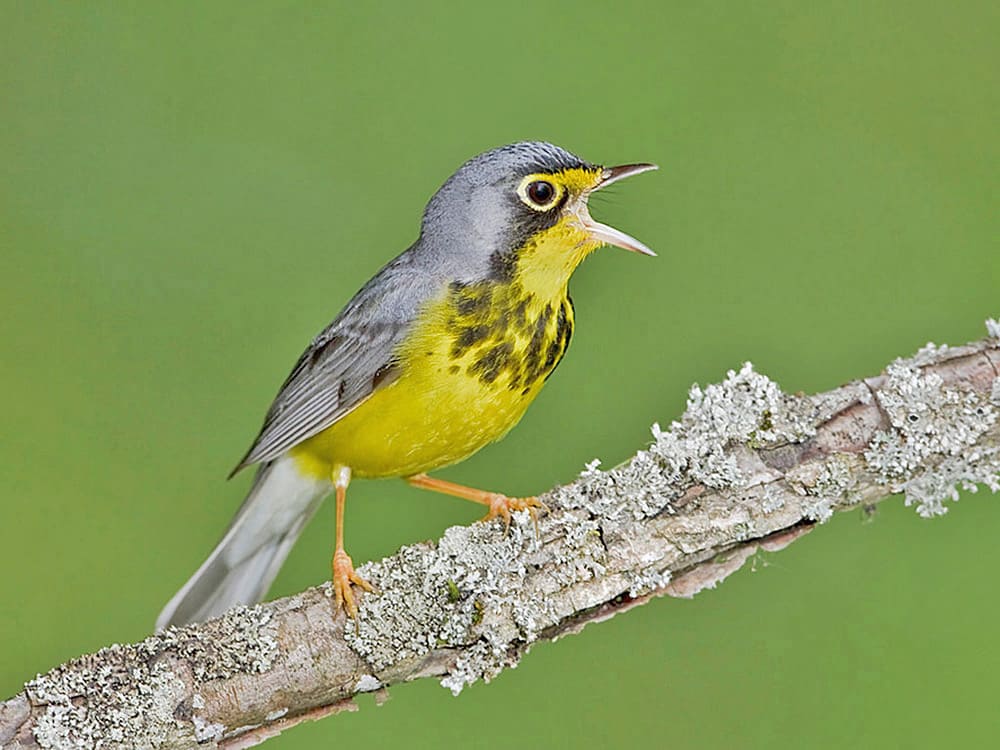
Canada Warbler. Photograph © Glenn Bartley.
When it comes to Canada Warblers, they have dark gray upperparts and yellow undersides, with some stripes on the upper side of their chests. That gives them a darker complexion than the Nothern Parulas.
Northern Parulas are a bit smaller than Canada Warblers. The two share a slight overlap in their ranges in the eastern side of North America.
Frequently Asked Questions
How common is a Northern Parula?
Northern Parulas are very common birds. They’re widespread and have a stable population. In fact, their estimated global population is 18 million.
What does a Northern Parula look like?
Adult male Northern Parulas have 2 white wing bars, a yellow-green patch on the back, and are bluish-gray overall. They have a chestnut band that separates the male’s bright yellow chest and throat. Adult female Nothern Parulas look very similar to adult male Northern Parulas. However, they lack the male’s breast band and are slightly paler. In addition, both adult males and females have distinct white eye crescents. Juvenile Northern Parulas lack the chestnut breast band and are duller than adults.
Do Northern Parulas migrate?
Yes, Northern Parulas migrate. They are long-distance migrants. They spend the winter months in the Caribbean, Mexico, and Central America. They breed from the boreal forest of Canada to North Florida, but they skip parts of Michigan, Wisconsin, Iowa, and some states in the northeastern portions.

